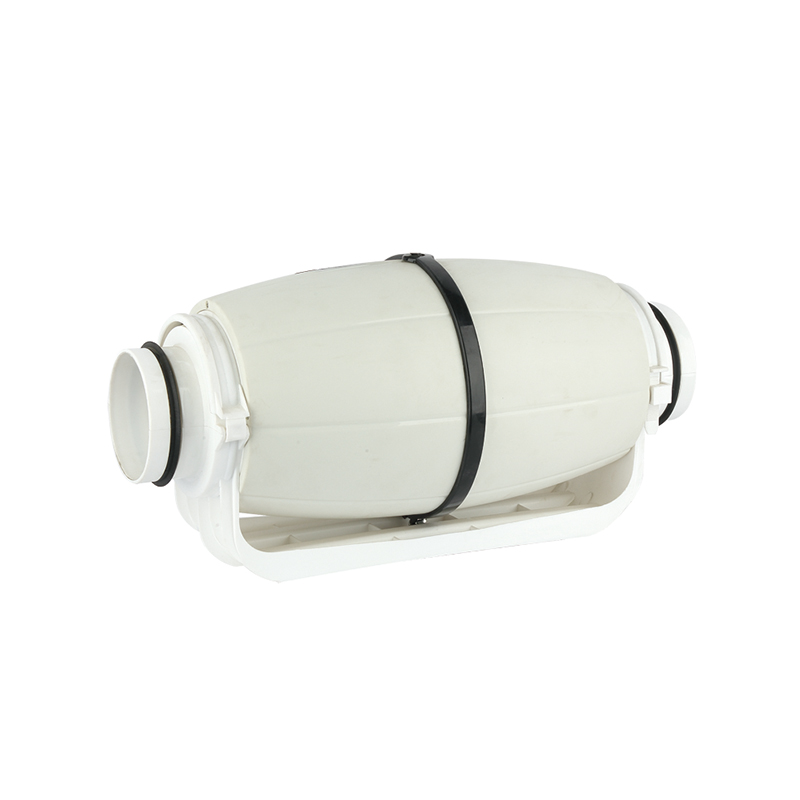Qinlang focuses on providing high-quality products and considerate services, and is committed to meeting every expectation of our customers.
The DKT-133 Cooling Ventilation Double Inlet Air Conditioning Fan is d...
See DetailsWhen selecting ventilation systems, many buyers face a common dilemma: Does opting for a silent duct fan mean sacrificing performance? The assumption that quieter fans are inherently weaker persists, but advancements in technology have blurred the line between noise reduction and power.
The Myth of the Quiet Means Weak Fan
Historically, ventilation fans with higher airflow capacity (measured in CFM – cubic feet per minute) tended to generate more noise due to faster motor speeds and less refined blade designs. However, modern silent duct fans now incorporate engineering innovations that allow them to compete with—and sometimes outperform—traditional loud fans.

Key improvements include:
- Advanced Blade Aerodynamics – Smoother, precision-balanced impellers reduce turbulence, allowing silent inline fans to move air efficiently without excessive noise.
- Brushless DC Motors – These run cooler and quieter than traditional AC motors while maintaining strong suction.
- Vibration Damping – Isolated motor mounts and rubberized frames in inline silent extractor fans minimize mechanical noise without restricting airflow.
Comparing Performance: Silent vs. Standard Fans
To determine whether silent duct fans are less powerful, we must compare real-world metrics:
1. Airflow Efficiency (CFM)
A high-quality silent inline fan can match the CFM ratings of standard fans in the same size category. For example:
- A standard 6-inch inline fan might deliver 200 CFM at 40 dB.
- A modern inline silent extractor fan of the same size can achieve 190-200 CFM at just 25-30 dB—nearly identical airflow with significantly less noise.
2. Pressure Performance
Where silent duct fans sometimes face limitations is in high-static pressure applications (e.g., long duct runs or systems with filters). However, premium models now feature:
- Multi-speed settings to boost pressure when needed.
- EC (Electronically Commutated) motors that adjust power dynamically.
This means an inline silent extractor fan designed for HVAC or industrial use can often handle restrictive setups nearly as well as a noisier alternative.
Where Silent Fans Excel (And Where They Don't)
Advantages of Silent Models
Discreet Operation – Ideal for homes, offices, or noise-sensitive environments.
Energy Efficiency – Many silent inline fans use 30-50% less power than older models.
Longer Lifespan – Reduced vibration and heat buildup extend motor life.
Limitations
Higher Upfront Cost – Advanced noise-reduction tech increases initial pricing.
Slight CFM Trade-Off in Budget Models – Cheap silent duct fans may underperform; investing in reputable brands is key.
Industry Applications: When to Choose Silent Fans
1. Residential Ventilation – Bathrooms and kitchens benefit from inline silent extractor fans that won't disturb sleep or conversations.
2. Commercial Spaces – Restaurants and hospitals prioritize hygiene without added noise pollution.
3. Recording Studios/Servers – Where even low hums interfere with sensitive equipment.
For industrial settings (e.g., factories with 1000+ CFM needs), standard fans may still dominate—but hybrid silent inline fans are closing the gap.
Conclusion: Silence Doesn't Mean Weakness
The idea that silent duct fans are inherently underpowered is outdated. While early models may have compromised on airflow, today's inline silent extractor fans leverage smart engineering to deliver comparable performance at whisper-level noise. For most applications—from home bathrooms to light commercial use—a well-chosen silent inline fan provides the great balance of power and tranquility.
The key is selecting a quality model from trusted manufacturers and ensuring proper sizing. The ventilation industry's progress proves you don't have to choose between quiet and powerful anymore.